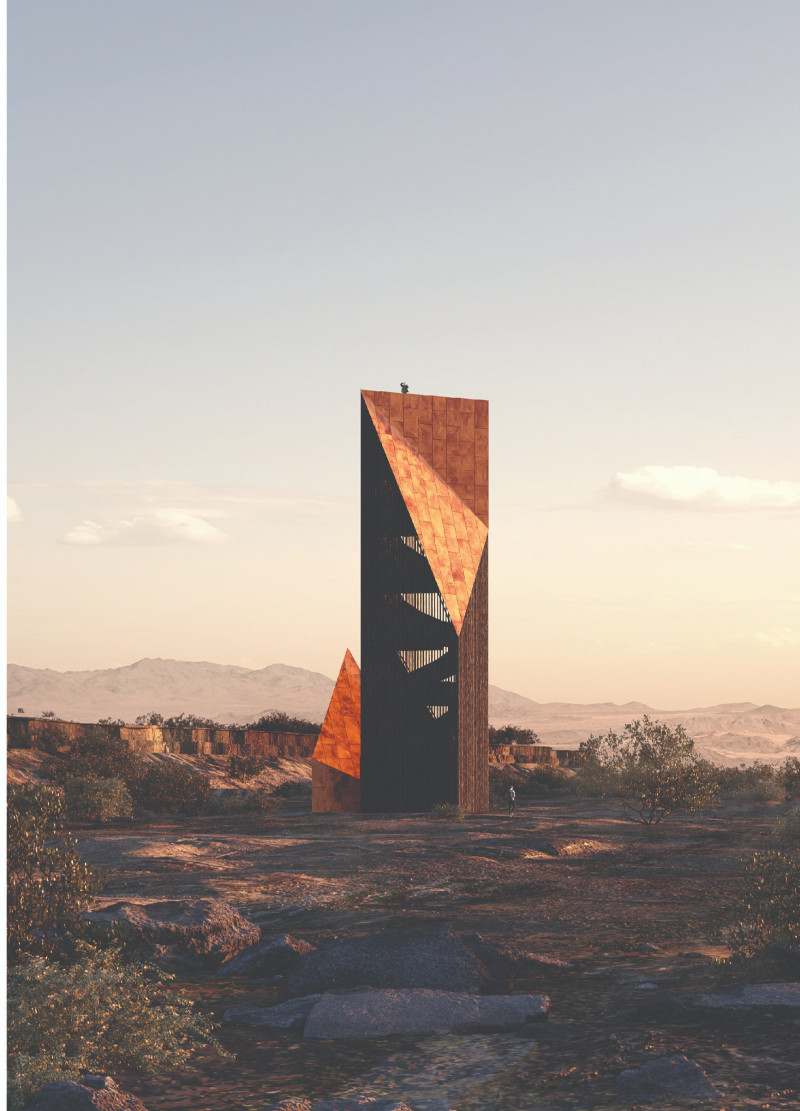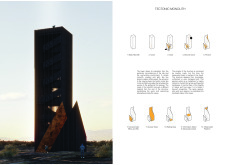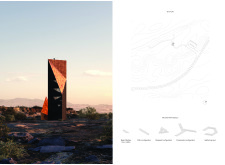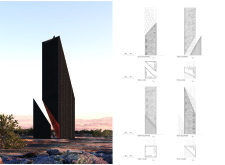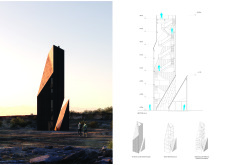5 key facts about this project
The Tectonic Monolith provides a striking engagement with its geological setting. Located in an area known for geothermal hot springs, the design draws inspiration from tectonic plates, presenting a form that is broken but cohesive. As a combination of a viewing tower and a visitor center, it enhances the experience of the surrounding landscape while focusing attention on the delicate balance of nature. The concept emphasizes how built structures can harmonize with their natural environments.
Spatial Configuration
The entrance is located within an architectural valley that directs visitors toward the geothermal features. This configuration transforms entry into an experience, guiding people from the outdoor landscape into the comforting interior of the building. The pathways invite exploration, making it easy for visitors to engage with their surroundings while moving toward the warm heart of the structure.
Material Expression
Timber and Corten steel are vital to the building's visual character. Timber provides an organic warmth that contrasts with Corten steel, known for its rugged and weathered finish. The stark materials are thoughtfully chosen; together, they create a dialogue between human construction and the elements. Over time, the Corten steel develops a rich patina, further aligning the structure with the geological environment that surrounds it.
Design Interpretation
The monolith’s cracked form serves to highlight themes of incompleteness and change. This design choice sparks thoughts about the ongoing processes found in nature. The structure appears as if it is still evolving. Cracks at the pinnacle enhance this idea, prompting visitors to consider their relationship with the environment. It also invites contemplation about the necessity of caring for the natural world.
Inward Reflection
Light and shadow play significant roles within the Tectonic Monolith. As natural light filters through the cracks, it creates varying atmospheres that change throughout the day. This interaction not only showcases the textural qualities of the materials but also enhances the sensory experience for those inside. Such details deepen the connection between architecture and landscape, immersing visitors in a thoughtful journey through space and time.


